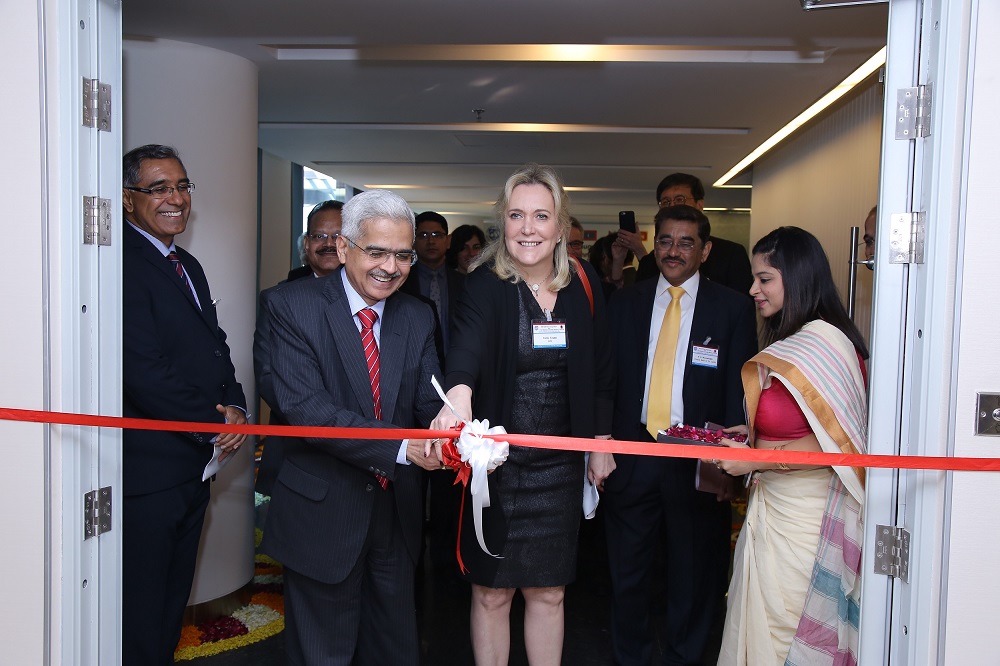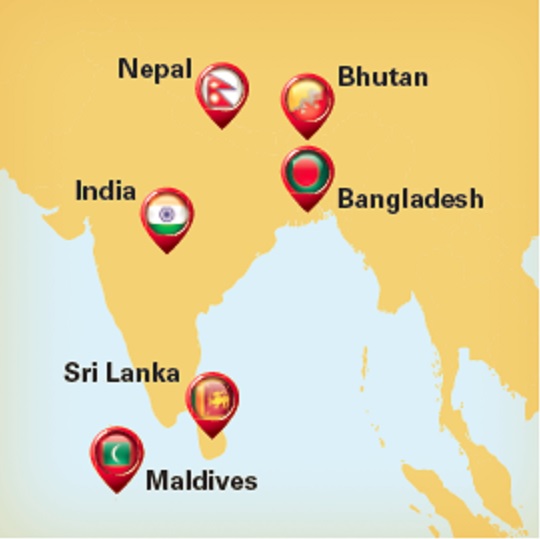About SARTTAC
The IMF’s South Asia Training and Technical Assistance Center (SARTTAC) was officially inaugurated by Secretary Shaktikanta Das of India’s Ministry of Finance in New Delhi on February 13, 2017. Senior officials from the Center’s six South Asian member countries (Bangladesh, Bhutan, India, Maldives, Nepal, Sri Lanka) attended along with development partners and an IMF delegation led by Deputy Managing Director Carla Grasso.
Less than a year after then IMF Managing Director Christine Lagarde and the Finance Minister of India, signed a historic Memorandum of Understanding to establish a capacity development center for South Asia, the opening of SARTTAC marks a major milestone in the partnership between the IMF and its member countries in the region.
SARTTAC is a collaborative venture between the IMF, the member countries, and development partners. The Center’s strategic goal is to help its member countries strengthen their institutional and human capacity to design and implement macroeconomic and financial policies that promote growth and reduce poverty.
SARTTAC will allow the IMF to meet more of the high demand for technical assistance and training from the region and contribute to its ability to bring growth and stability to the region. Through its team of international resident experts, SARTTAC is expected to become the focal point for the delivery of IMF capacity development services to South Asia.
SARTTAC, the newest addition to the IMF’s global network of 14 regional centers, is a new kind of capacity development institution, fully integrating formal training with hands-on technical advice in a range of macroeconomic and financial areas, and generating synergies between the two. SARTTAC is located in state-of-the-art facilities in New Delhi. The Center is financed mainly by its six member countries, with additional support from the European Union, the Republic of Korea, Australia and DIFD (UKaid).
For more information see the brochure on Building Macroeconomic Capacity in South Asia (PDF).
SARTTAC'S Mission and Priority Areas
Mission
SARTTAC’s goal is to help its six member countries strengthen their capacity to design and implement policies that promote macroeconomic stability, sustainable growth, and poverty reduction in line with the 2030 Agenda for Sustainable Development.
SARTTAC provides hands-on technical advice in a range of macroeconomic and financial areas and training to strengthen the skills of officials to formulate and manage effective macroeconomic and financial policies.
It is the IMF’s newest capacity development center and the first of the 14 regional centers to fully integrate technical assistance and training activities.
Priority Areas
IMPROVING DOMESTIC REVENUE MOBILIZATION through better tax systems that support economic efficiency, voluntary compliance and trust, and allow for much-needed social and infrastructure spending
MODERNIZING PUBLIC FINANCIAL MANAGEMENT to promote fiscal sustainability through stable public finances and stronger institutions to support efficient and effective use of public resources
STRENGTHENING CENTRAL BANKS’ ABILITY to implement sound monetary and exchange rate policies to achieve low and stable inflation
IMPROVING UNDERSTANDING OF MACROECONOMIC RELATIONSHIPS in the member countries of the region
ENHANCING FINANCIAL SECTOR SUPERVISION AND REGULATION for stability and broader access to financing and promoting the development of financial markets
PUTTING MORE AND BETTER QUALITY MACROECONOMIC AND FINANCIAL DATA in the hands of policy decision-makers and other stakeholders
STRENGTHENING THE CORE INSTITUTIONS RESPONSIBLE FOR GOOD POLICIES, such as ministries of finance and economy, tax and customs administrations, central banks, statistical agencies, and financial sector supervisory agencies


